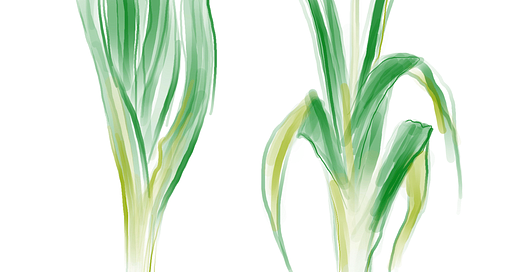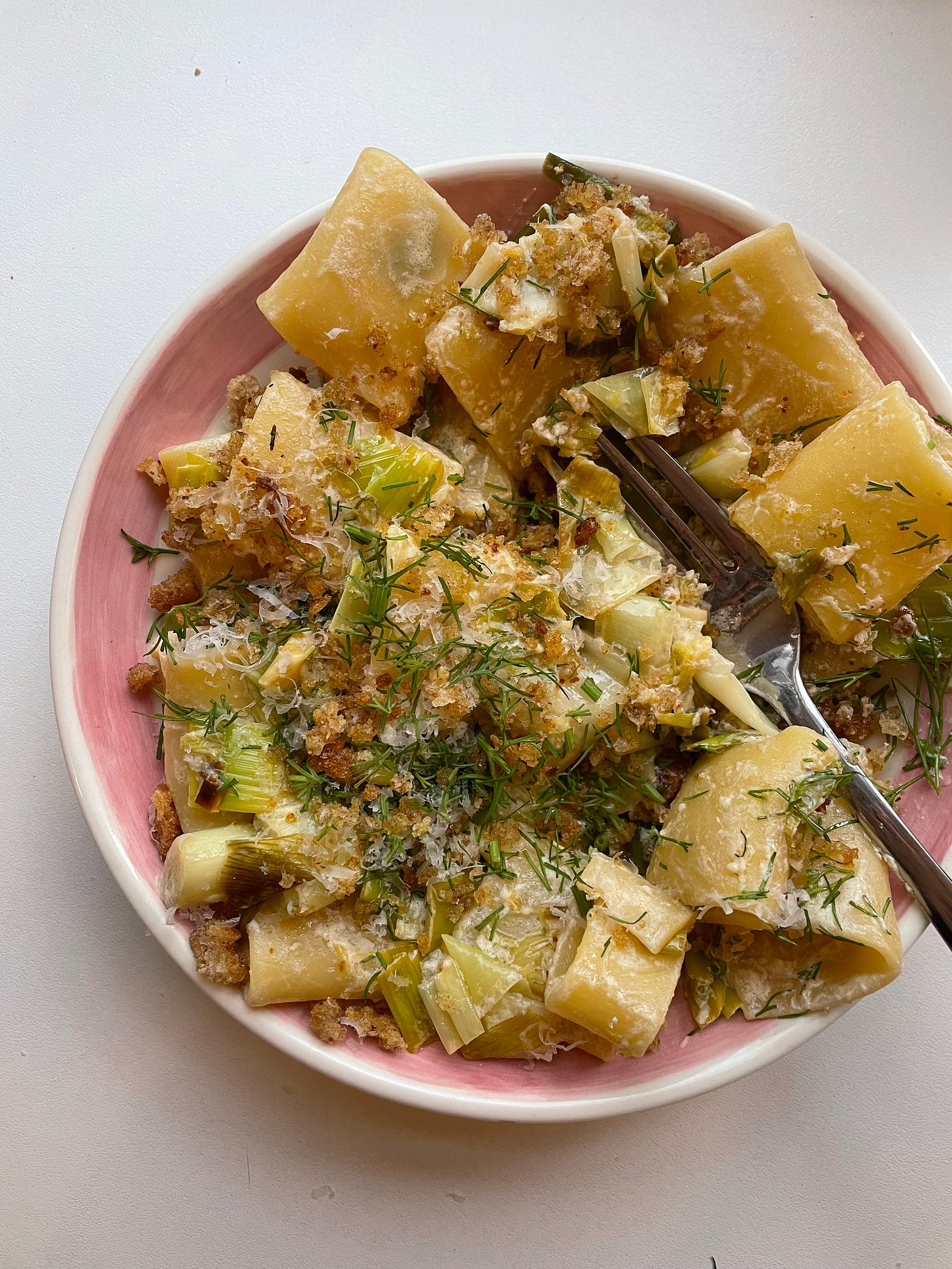This week I turn the spotlight to an allium all too often relegated to the wings of winter veg.
Perhaps it is overlooked on account of its permanent station on the supermarket shelf, or because – in appearance – it is just a glorified, oversized spring onion. But whether melted into obscurity alongside too many other flavours, tarnished by starchy association with an uninspiring soup… or just outshone by a punchier accompaniment, the poor leek rarely takes centre stage.
My newfound appreciation for it (yes, embarrassingly newfound) began on a warm, late summer’s day near Verona. Reunited with long-lost second cousins – who just so happen to run a magnificent winery in Soave – we spent the morning roaming their sun-drenched vineyards, looking out over the rolling hills of the Veneto. Lunchtime drew us to their beautiful farmhouse, whose cool, barrel-vaulted cellars revealed an Aladdin’s cave of bacchanalian treasures. The most exciting thing, however, was the sweet, buttery smell wafting down from the kitchen. Here, I was introduced to Mamma Donatella, whose reputation in the kitchen far preceded her. She was cooking her famous risotto, and the only thing she was adding to it… was leeks.
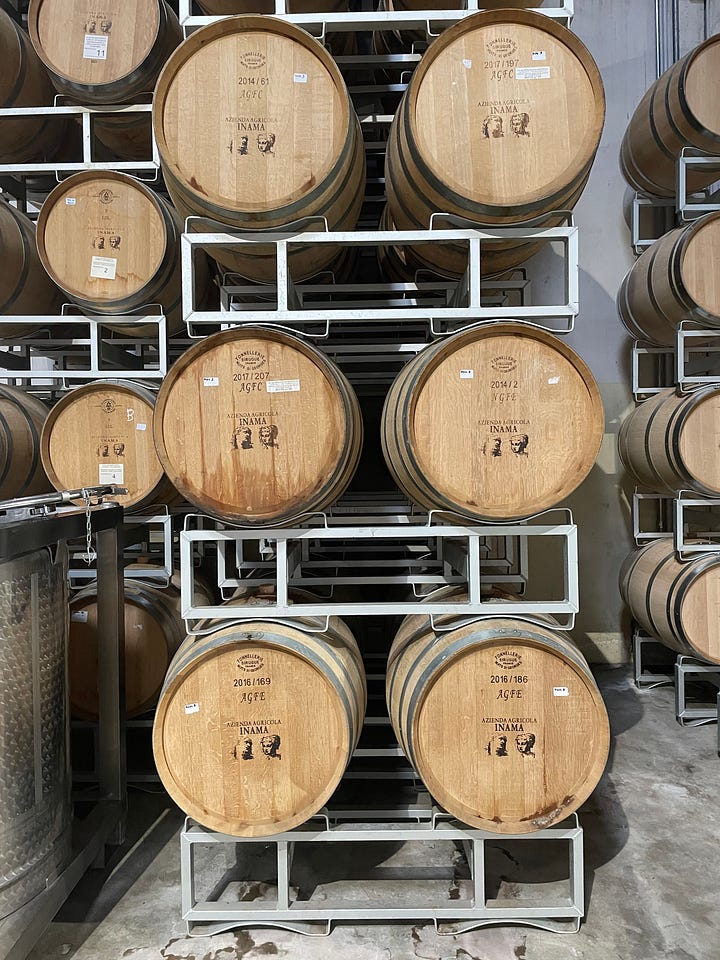
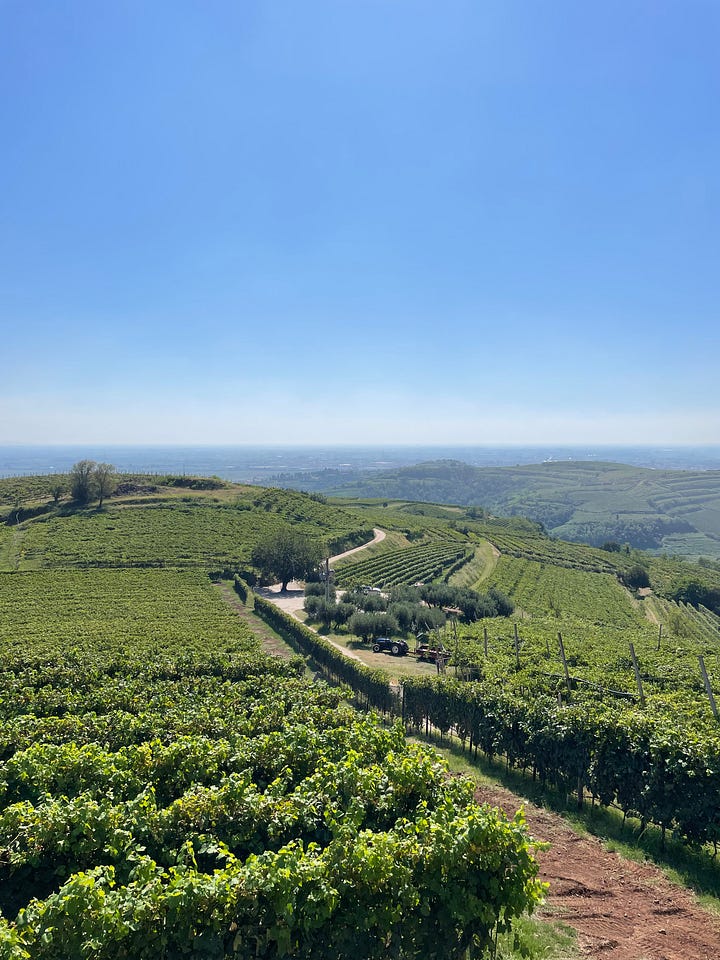
Appetites whetted by a floral glass of Inama’s delicious Vulcaia Sauvignon, we eagerly passed round steaming bowls of rice. In appearance, the risotto was entirely unremarkable, the leeks almost disintegrated into pale, parmesany oblivion. But in flavour, it was absolute perfection. The pairing of the leeks’ mild, oniony sweetness with the savoury kick of parmesan was everything it needed. The creamy texture, Donatella told me, was thanks to a very special variety of Venetian rice called Vialone Nano. I think I had thirds.
Beyond questioning why I was working an office job in London rather than living out my culinary and viticultural dreams amongst the Palladian villas of the Veneto, I came away thinking wow, what a veg.
So here we are today. Me waxing lyrical about a ubiquitous winter green. And whilst I haven’t yet got my hands on the revered Vialone Nano rice (or attempted Donatella’s risotto for fear of my inevitably inferior results), I have been eating a lot of leeks.
Recent recipe testings have included a confit leek, taleggio and thyme tart served with a golden roast chicken; confit (yes, I like oil) leek, hazelnuts and creamy polenta and a very simple, very delicious leek, dill and crème fraîche pasta, which I am going to share the recipe for now.
leek, dill and crème fraîche pasta
(with crunchy pangrattato and lemon)
What this pasta lacks in good looks, it more than makes up for in its almighty flavour. Whilst it may not be your next dinner party show stopper, please, for me, consider trying it for your next cosy evening in. Let the leek do the talking.
Serves 4
80g butter
2 leeks, chopped into 1cm rings
3 garlic cloves, finely diced
150g crème fraîche
1 lemon, juice and zest
100g parmesan, grated (plus extra for serving)
500g paccheri (or other pasta as desired)
handful of dill, coarsely chopped
4 tbsp pangrattato (see recipe in my radicchio post)
salt and pepper to taste
Set a large pan on medium heat. Melt the butter, then add the chopped leeks. Cook down, stirring every now and then, for 20-25 minutes until soft and melty, almost catching brown in places. Add the grated garlic.
Meanwhile, set a well-salted pan of water on to boil for the pasta. Once boiling, add the paccheri and cook until al dente.
Whilst the paccheri is cooking, add the crème fraîche, lemon zest, half the lemon juice and parmesan to the leeks. Stir to combine - it should look like a lovely creamy mess.
Using a strainer spoon or similar implement, transfer the pasta across into the leek pan. The more starchy pasta water that comes with it the better. Stir well to combine, continuing to cook for a further minute. If the sauce feels dry, add a couple of tablespoons more of the pasta water to loosen it.
Taste for acidity, adding the rest of the lemon juice if desired.
Finish with a sprinkling of dill, pangrattato and extra parmesan.
P.S. I served mine with a tangy kale and apple salad and it was delish.
Other (more cultural) highlights this week included an evening at the Duke of York’s Theatre, watching Thomas Ostermeier and Florian Borchmeyer’s adaptation of Ibsen’s An Enemy of the People.
Matt Smith plays an ungainly doctor and environmental advocate protesting against corruption in his town, as they try to conceal results of a contaminated tourist spa. A small-scale act of familial rebellion morphs into an incensed, conspiratorial tirade, as the audience is transformed into an active town hall debating the moral and economic tradeoffs of the environmental discovery.
It was an illuminating and compelling watch, and as it became clear that the spa town was in fact a microcosm of the rotten world at large, the heat it in the audience (encouraged to participate in the conversation) started to build. Even as a shamefully infrequent theatregoer with no right to go about recommending plays, I reckon this one is worth seeing.
I also had a very memorable visit to the Royal Academy to see their latest show Entangled Pasts, 1768-now. I’ll spare you the longer summary, but it was a brilliant, moving glimpse into the power of art to shape historical narratives. Richly informative and compelling on both intellectual and visual levels, it guided viewers through three centuries of art’s engagement with and response to colonialism, enslavement, abolition and empire.
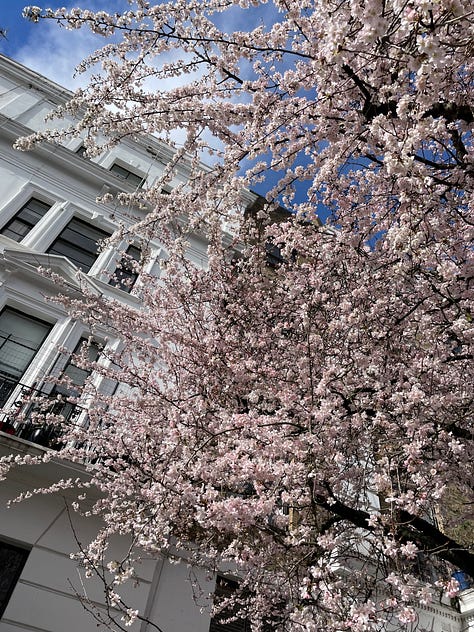
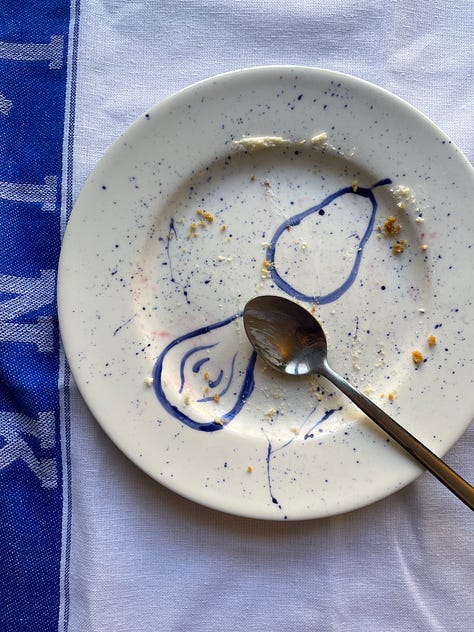
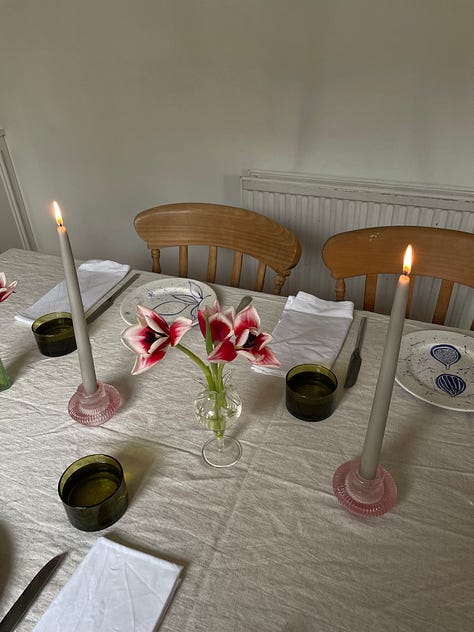
And that’s me for the week! I’ve spent a lot a lot of time making and painting pottery (commissions have excitingly been ramping up), so I’m all out of stories for now, but I’ll be back next week to talk about the Jerusalem Artichoke…
Thank you so much for reading! If you liked the recipe (or the ramblings) I’d love to hear your feedback 💛 and please do share the love using the link below.

